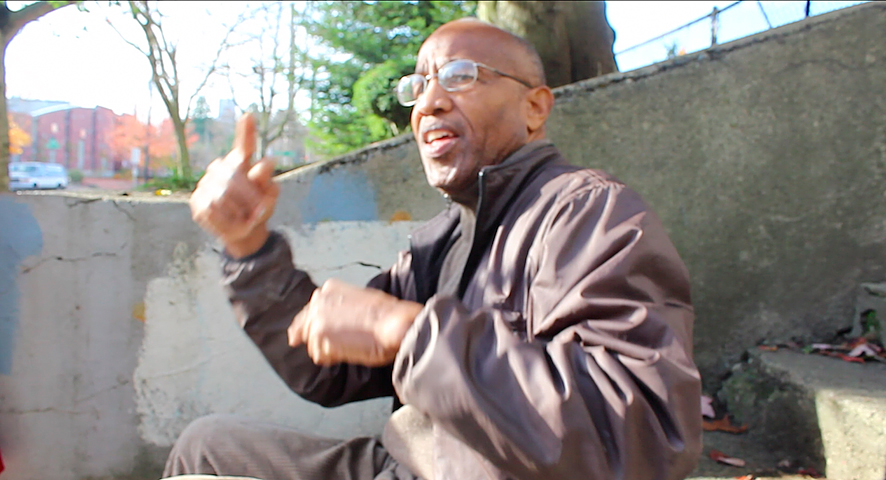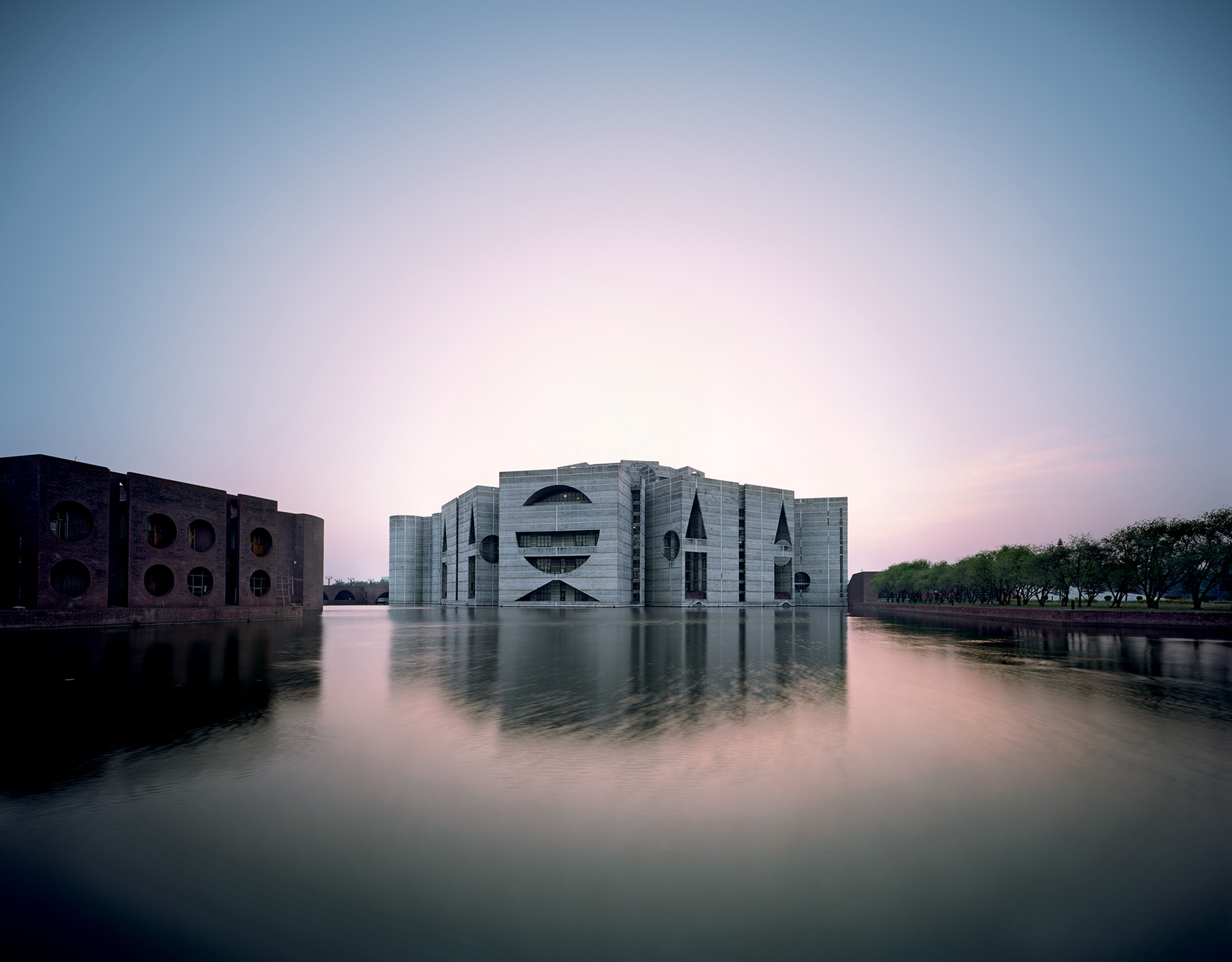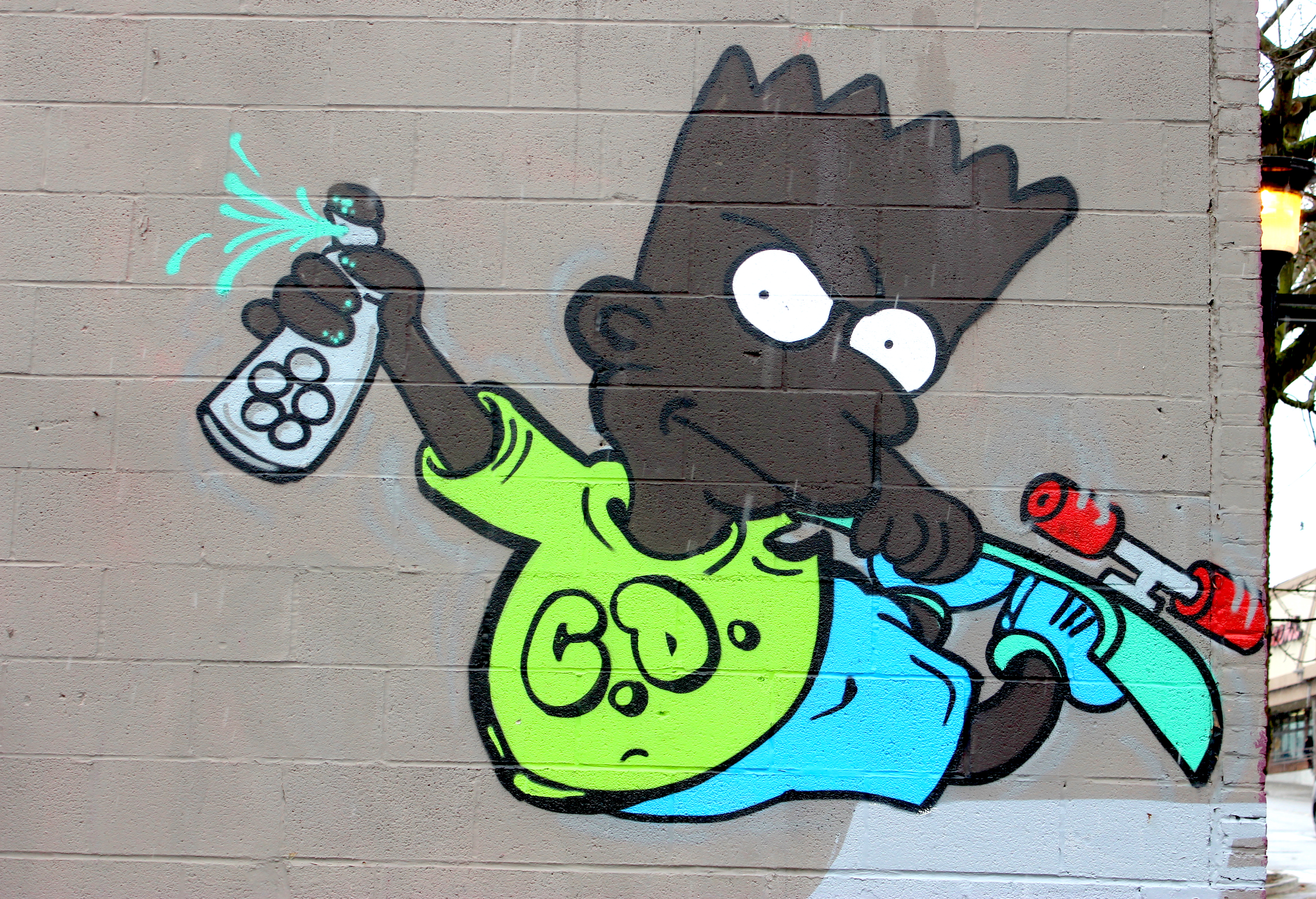A chain-link fence decorated in blood-red banners bearing messages like DECOLONIZE OUR SCHOOLS FREE US ALL barricaded the 100-year-old Horace Mann school in the Central District.
The main entrance was blockaded by chairs, desks, and garbage bags. A stuffed giraffe and a large carved Zulu statue stood guard. Flags of African nations speckle the building’s perimeter.
Welcome to AfricaTown.
The “AfricaTown Center for Education & Innovation” started as a community-driven after-school program. Its mission was to close the achievement gap for black youth as well as educate them on their heritage and history in a country that typically glosses over it.
The program ran in conjunction with the independent Seattle Amistad School, which occupied the Horace Mann building until June 15, when the lease with Peoples Family Life, the group subletting the building, ran out. Seattle Public Schools decided not to renew the lease because the school board had voted to renovate the building as the site of a new Nova alternative school instead.
SPS allowed Amistad to remain in the building until August 15 so they and the community groups inside, like AfricaTown, could find a new home. August 15 came, and Amistad left.
AfricaTown did not.
Members chained up the interior, and an undisclosed number of them—no more than a dozen—began effectively living in the old school. For the African-American community inside, this was the latest in a long history of systematic disenfranchisement. The school was one of the only spaces they felt they had left, and they weren’t letting go.
The occupation put School Superintendent Jose Banda in an awkward spot. He is keenly aware of the racial achievement gap in Seattle schools; at the State of the District speech he gave on November 12, it’s almost all he talked about. Spreadsheets were handed out detailing the drastic difference in math-exam scores: 83 percent of white students passed in contrast to the 41 percent of African-American students. In Banda’s own words, “Our achievement gap is unacceptable. We simply must do better.”
But he was also keenly aware that, with construction on the Nova school stalled, the Horace Mann occupation would cost the district $1,000 a day in delay fees.
Banda tried to strike a compromise, proposing that the district give AfricaTown rooms at Columbia Annex, miles away in Rainier Valley. Many of the occupiers accepted the district’s Columbia Annex compromise and left Mann, but not all. Emerging as a leader of the holdouts was Omari Garrett, whom many people know as the man who broke former Mayor Paul Schell’s nose and facial bones with a bullhorn in 2001, which cost Garrett 21 months in prison. After the district shut the power off to Horace Mann on November 9, Garrett grabbed a generator.
Then things got tense.
The night before I paid a visit to AfricaTown to speak with Garrett, KIRO-TV reported that they’d received a threat on their voice mail from someone inside claiming to have an “itchy trigger finger.” The threat came after KIRO-TV cameramen tried to set up some exterior shots at nighttime, shining their lights on the building. Garrett claims the call was a prank from someone trying to make them look bad, and vowed to press on.
Seattle Public Schools began talking with SPD about their next move. On Tuesday afternoon, they made it. Police surrounded the school, broke through the barricade, and emerged with four men in handcuffs—including Garrett—under arrest for criminal trespass.
Above: Omari Garrett on the steps of Horace Mann
Garrett, 67, shuffles when he walks and tends to ramble a bit, but he’s friendly and personable. As we spoke last week on the steps of the occupied school, drivers honked and waved, and people walking down the street asked if they could lend a hand.
Garrett’s been in the CD since childhood. He played football at Garfield across the street when he was a kid—“the first Russell Wilson” —back in 1964. He ran the social-studies department at Horace Mann from 1972 to 1974.
“It was basically a school for all the black students who had been kicked out of middle school and high school,” Garrett said. He had to be on the ball with the students, many of whom were caught up in street hustling and had no sense of where their people came from.
“Money isn’t everything, but when you think that, you stop thinking about yourself as a person,” Garrett said. “I had to teach these kids black history, but first I had to teach them human history. They had to feel human before they could start to find their black identity.”
Garrett’s schooling had taught him about only two black people: George Washington Carver and Booker T. Washington. As a teacher, he was committed to giving his students something better. But eventually, black schools in the CD got broken up thanks to busing, and a black Seattle diaspora formed. Unification became hard without a central community, and drugs and gangs were tearing people apart.
For Garrett, AfricaTown is more than an educational program; it’s a vision of a unified African community in the CD. Think Chinatown in the International District.
“It’s a whole community,” Garrett said. He pointed at Horace Mann. “We need to develop our community and show children what you can be when you grow up—a part of a viable economic community with doctors and lawyers and scientists.”
Instead, Garrett said, hip-hop is where most black children find community and identity, which often promotes a money-driven, “bling-bling” lifestyle, as Garrett puts it. A notable exception is Shabazz Palaces, a local group that Garrett says helps black youth connect with their past, in part by using traditional African instruments like the mbira.
Above: “Blastit,” an mbira heavy track from Shabazz Palaces. Tendai Maraire’s father worked with Garrett in the 70s.
A member of Shabazz Palaces, Tendai Maraire, phoned me from L.A. to voice support for the occupation. He remembers hanging out at Rainier Place when he was a kid, part of a “Late Night Program” that kept black kids off the street. After gentrification started in the CD, most of these community-center programs disbanded.
“That’s what I think AfricaTown would change—it would give people a sense of hope,” Maraire said. “I would ask the question, ‘Why wouldn’t [the school district] want to give that school to that community?’ Why do you want to have an alternative school? Alternative schools lead to what? Homelessness. Abortions. It leads to all these negative things. Why not have another option that demographically speaks to the people, and helps keep people off the streets and fulfill their dreams?”
At the end of my conversation with Garrett, a local broadcast reporter swooped in and put a camera in Garrett’s face. “So, Mr. Garrett, how long have you and the people inside been occupying Horace Mann?” the reporter asked.
Garrett paused a moment.
“Well, we’ve been here for 50 years.”
ksears@seattleweekly.com








